STRUCTURE & CULTURE
Playfully essential and essentially playful: Denis Goldberg’s House of Hope in Hout Bay
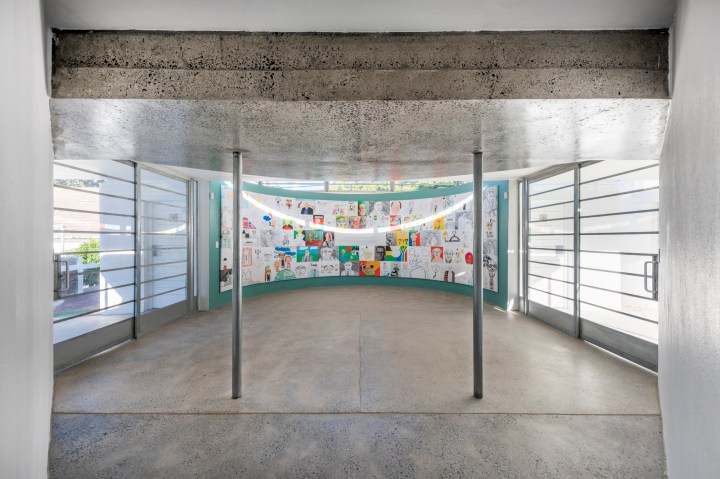
An architectural manifestation of the late Denis Goldberg’s dream, the House of Hope promises to be an innovative paradise for the youth of Hout Bay.
Snaking between the quaint (but proud) farm-style heritage buildings that make up the Hout Bay Museum is a new structure, whose open-aired corridor, lined with columns of galvanised steel, leads to the heart (or at least the hearth) of the House of Hope, an arts and culture community centre that is re-envisioning what youth education can look like.
Enter the naturally lit foyer and you are greeted with the face of the mastermind behind the operation – the late Denis Goldberg. Or, more accurately, over 100 portraits of Goldberg in all manner of shapes and sizes.
There is Goldberg with a bright red, Rudolph-esque nose. There he is with a wide mouth, empty aside from two extremely sharp canines. Goldberg, looking like he’s just had dinner with Tony Soprano, sporting a tank-top, muscles, and an impressively defined five-o-clock shadow. Goldberg, yellow and very bald wearing a pair of sunglasses that say “the dream” in block letters. Goldberg, standing on an ambiguous mound, holding two puffy hearts. Next to that, bearing no resemblance to Goldberg at all, an interesting depiction of a reindeer.
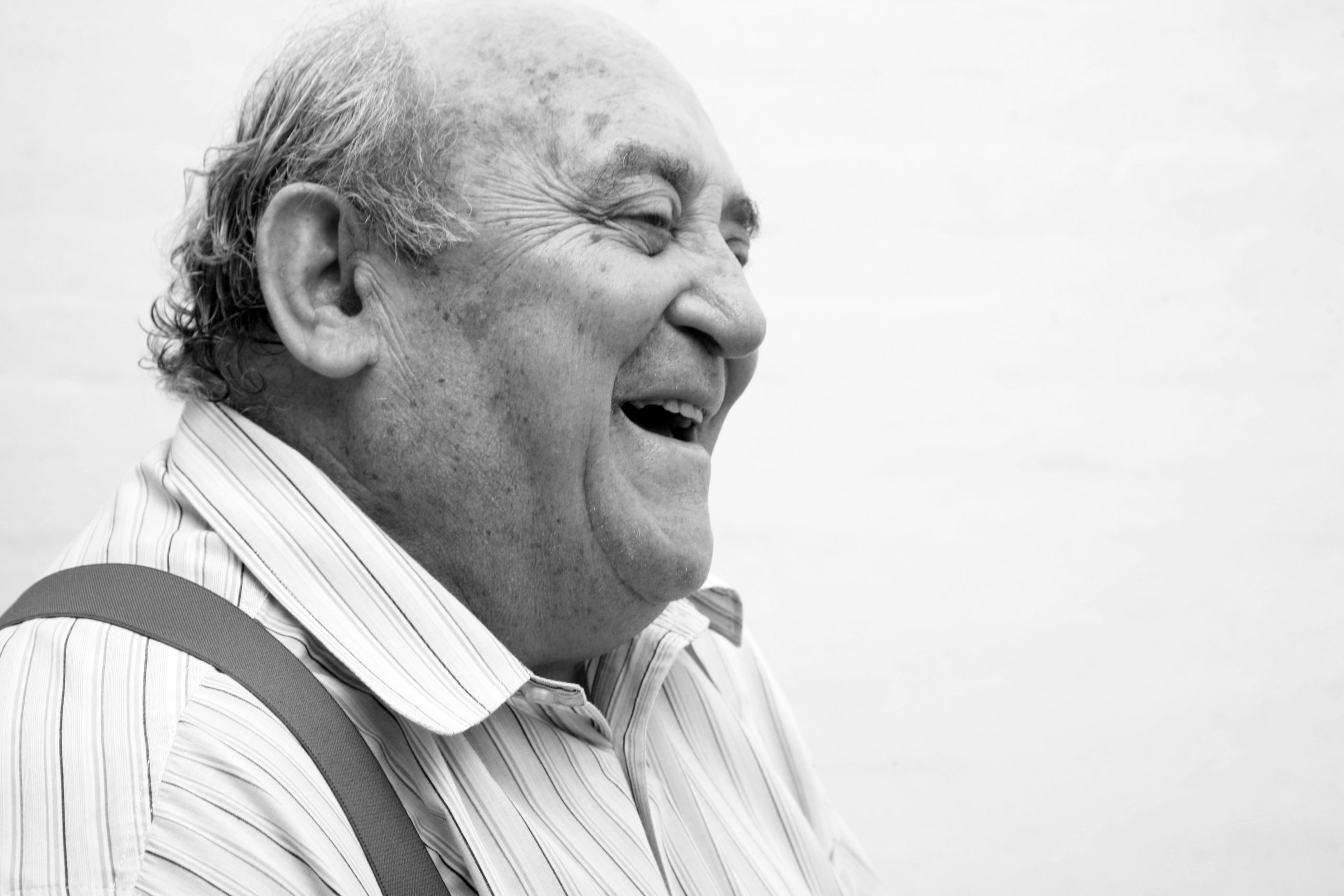
Denis Goldberg. Image: Supplied / M Willman
“That one looks like FW de Klerk”, jokes Jo Noero, founder of Noero Architects, an award-winning Cape Town architectural firm, and the architect in charge of overseeing the design and construction of the House of Hope, “and that one like the leader of North Korea”.
Noero offers an explanation: “This was a really lovely project run by the Lalela Art Project, a local art enrichment programme. They held a portrait drawing competition for kids in this area and a part of the Cape Flats. They taught the kids about Denis [Goldberg] who he was, showed them his picture, and then said, right, now draw him. We collected these pictures, scanned them, and made them into a giant wall mural which is 9m by 2,5m. When we open, we are going to invite all of the artists here, give each one a pen, and have them sign their work and get their picture taken with their families.
“And there’s Denis,” Noero points to yet another artfully rendered face, “an unrequited communist with a speech bubble that says, “I love God”. He [Goldberg] is probably sitting up there saying ‘This is really funny’.”
This mural, in all of its accidental humour and multifaceted glory, encapsulates both the playful freedom that Goldberg hoped to manifest in the House of Hope, as well as the legacy of the man himself. Smack in the centre of Goldberg’s multiple faces is one of his most famous quotes: “Life! Life is wonderful”.
Goldberg was an anti-apartheid struggle hero who, according to Noero, “has got a treasured position in South African struggle politics”. After the infamous raid of Liliesleaf Farm, a safe house for ANC activists, by the police in 1963, Goldberg was the only white man to be sentenced alongside Nelson Mandela and nine others at the Rivonia trials of 1964.
“Life! Life is wonderful.”
Charged for sabotage and expecting to be executed, the activists were sentenced to imprisonment for life. It was in response to this sentence that Goldberg shouted the famous quote mentioned above. “Life!” he told his mother, “Life is wonderful”!
While the ANC activists imprisoned on that day were sent to live out the rest of their lives on Robben island, Goldberg, on account of his skin colour, was placed in Pretoria Central prison. “He was badly treated there by the white Afrikaans nationalist warders,” says Noero. “He was in solitary confinement for many years and his cell was near death row for a long period of time so he could hear prisoners being led off to their executions. They treated Denis badly because he was seen as a traitor, a pariah for the white South African national project. But he survived it.”
Released in 1985, Goldberg was in prison for 22 years in total. He lived a free and eventful life for another 35 years before dying from cancer in 2020, at the age of 87.
It takes a special kind of person to believe that life, even a life to be spent in prison, is wonderful. And it’s this lust for simply being alive that was embodied in Goldberg’s lifelong community-based endeavors and will continue in the form of the House of Hope, despite his death last year.

Turning sod for the Denis Goldberg House of Hope in 2019. Image: Supplied
A section of the House of Hope is dedicated to an exhibition space that will commemorate Goldberg’s life story. But, as Noero clarifies, the exhibition will not be monumentalising or idealising Goldberg, “it is none of this adulation of the Mandela mania that grabbed us”.
Instead, through highly personal stories and artefacts, the exhibition will be “about how history is made by ordinary people”. It will include items such as an interview by Goldberg’s late wife about raising children in exile with a husband in prison, letters Goldberg wrote to his children inquiring about their education in England, and other memorabilia that will elucidate just how harsh the reality of spending so many years in prison can be.
“Denis wanted the exhibition to say, ‘I went to Observatory High when I was a kid’ and after that he went to UCT where he became an engineer,” Noero elaborates. “This is a story about an ordinary guy who had strong ideals, and whose beliefs drove him to commit himself to better this country. We are hoping that the way we frame the exhibition of Denis’s life will be so that kids can read it, they can see it, and they can feel that they too have the opportunity to do the same thing for themselves and the country.”

Denis Goldberg House of Hope. The large mural was designed by Brendon Bell-Roberts from Art Africa. Image: Paris Brummer
Another section of the House of Hope will be dedicated to Goldberg’s art collection, which will be displayed in a series of themes and used as an educational tool for visiting children. Goldberg’s collection, which is both extensive and impressive, is made up of what Noero calls “naive art. Like the art that you would buy on the corner of a road, or if you went to a gallery in Paarl”. Free from the boundaries of pomp and ceremony, the prestige and clout that so often shrouds the art world, Goldberg’s collection is true to his taste. As Noero points out, “there are some incredible local artists among them”.
“Goldberg ‘wanted a building where kids could come and they could just engage in art, music, dance, whatever it was, through structured projects.’”
While the centre will house this ode to Goldberg, an ordinary man who did incredible things, the House of Hope is, most importantly, for the youth of Hout Bay. Goldberg moved to Harbour Heights in Hout Bay in 2005, where he had visited his niece and her husband, Joseph Noero. “He came to visit us once and he said, right, this is where I want to live,” explains Noero. “So, I built him a house around the corner and he lived there until he died. Denis decided that he wanted to make a contribution to the community in Hout Bay in a small way but to do it properly. And he had this obsession about arts and culture being the point of entry into youth development.”
According to Noero, who worked closely with him on conceptualising the House of Hope for several years before he died, Goldberg believed that “arts and culture give people an opportunity to think for themselves and the confidence to be people in their own rights”. In the creation of the cultural centre, Goldberg “wanted a building where kids could come and they could just engage in art, music, dance, whatever it was, through structured projects”.
The idea is ultimately what Noero calls a “non-conformist one. It’s about creating a space, giving children freedom and letting them feel that they can express themselves”. An idea that has been designed and built into the very structure, the architectural integrity, of the House of Hope.

Denis Goldberg House of Hope, Noero Architects. Image: Paris Brummer
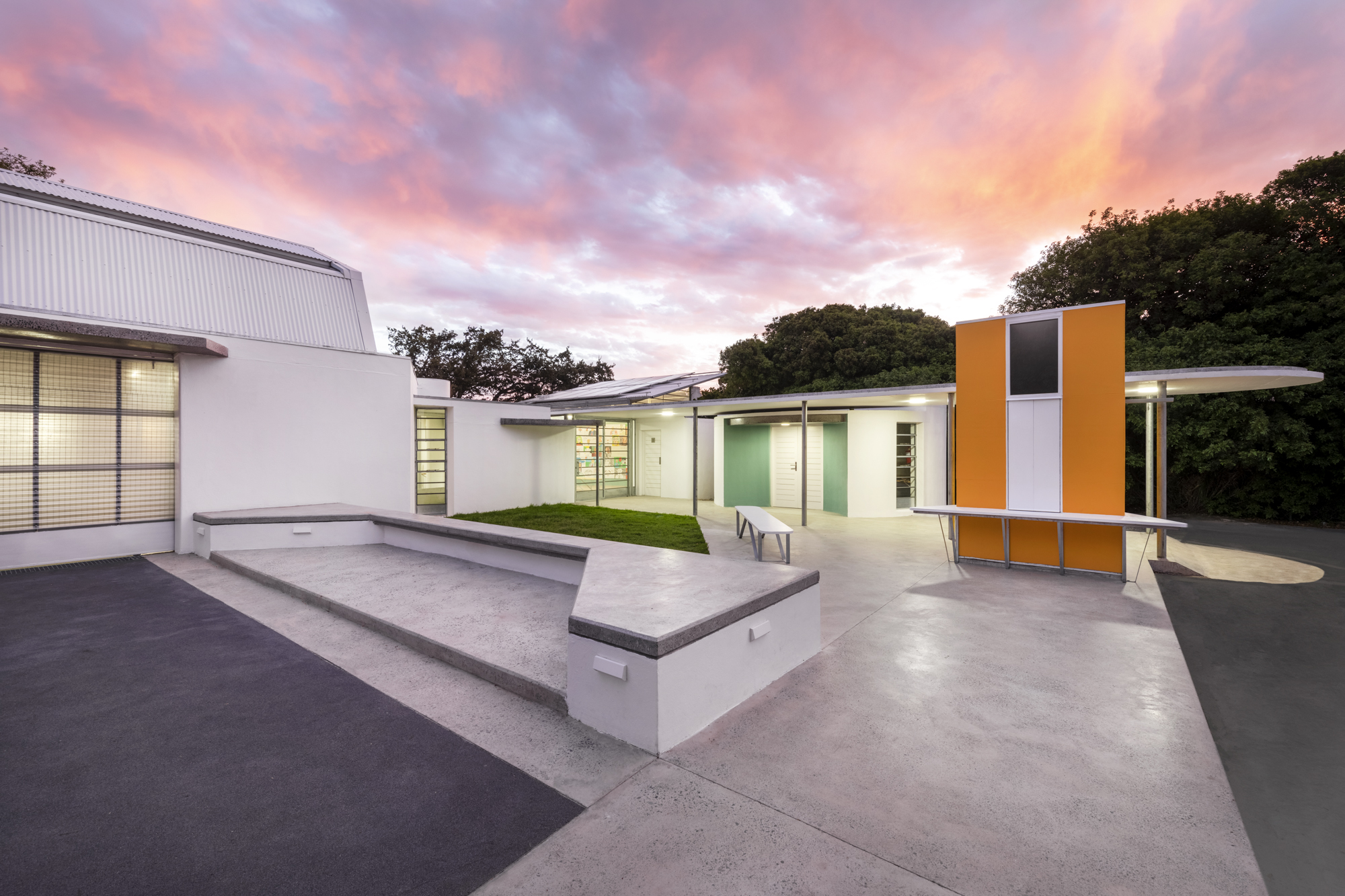
Denis Goldberg House of Hope, Noero Architects. Image: Paris Brummer
Goldberg wanted the centre to be formed out of what he called “open spaces”, a concept that contrasted his oppressive experience in prison. Most prisons are laid out so that a series of cellular spaces are connected in one direction to a singular corridor. It’s a rather disturbing fact that many traditional school buildings are designed in this way, too.
In contrast, the House of Hope is a structure that has a central spine with a series of buildings attached to it. “Each building is like a room in its own right, and you go from one room to outside, undercover, to the next room,” explains Noero. The idea is “you are always connected to the outside”. To fresh air. To freedom.
Further, many of the House of Hope’s activities take place in the same space; an ample, bright, and airy hall-like room. “Denis said he didn’t want this idea of having separate spaces that you move through quietly”. Noero said regarding the main gallery, exhibition space and teaching area, “he wanted it all to be one big space. You’ll have tourists coming to look at Denis’ life on one side, you’ll have kids learning hip hop in the middle, and you’ll have people looking at art on the walls, all at the same time”.
“What is necessary is not always luxurious; but what is luxurious is never essential”
Above the big room, hanging like an upside-down boat, separated only by the shape of the air, is the centre’s library, which promises to serve as a study space for young adults doing their last years of school or first years of university, as well as an archival and digital resource for researchers.
Not only will the contents of this room be varied and ever-morphing, but the shape of the space itself is also capable of changing. Big doors open out into an amphitheatre, making the classroom half indoor and half out. Sliding panels mean that sections of the room can be closed off or opened up at any time. The structure itself is free to be all manner of things.
“It’s about play,” Noero expands. “It’s about knowing what kids are like. They like to take things apart, to run around, to scream and shout. And they love to play. We tried to build it in such a way that they don’t feel that they can’t, or that there is a forbidding eye watching them.”
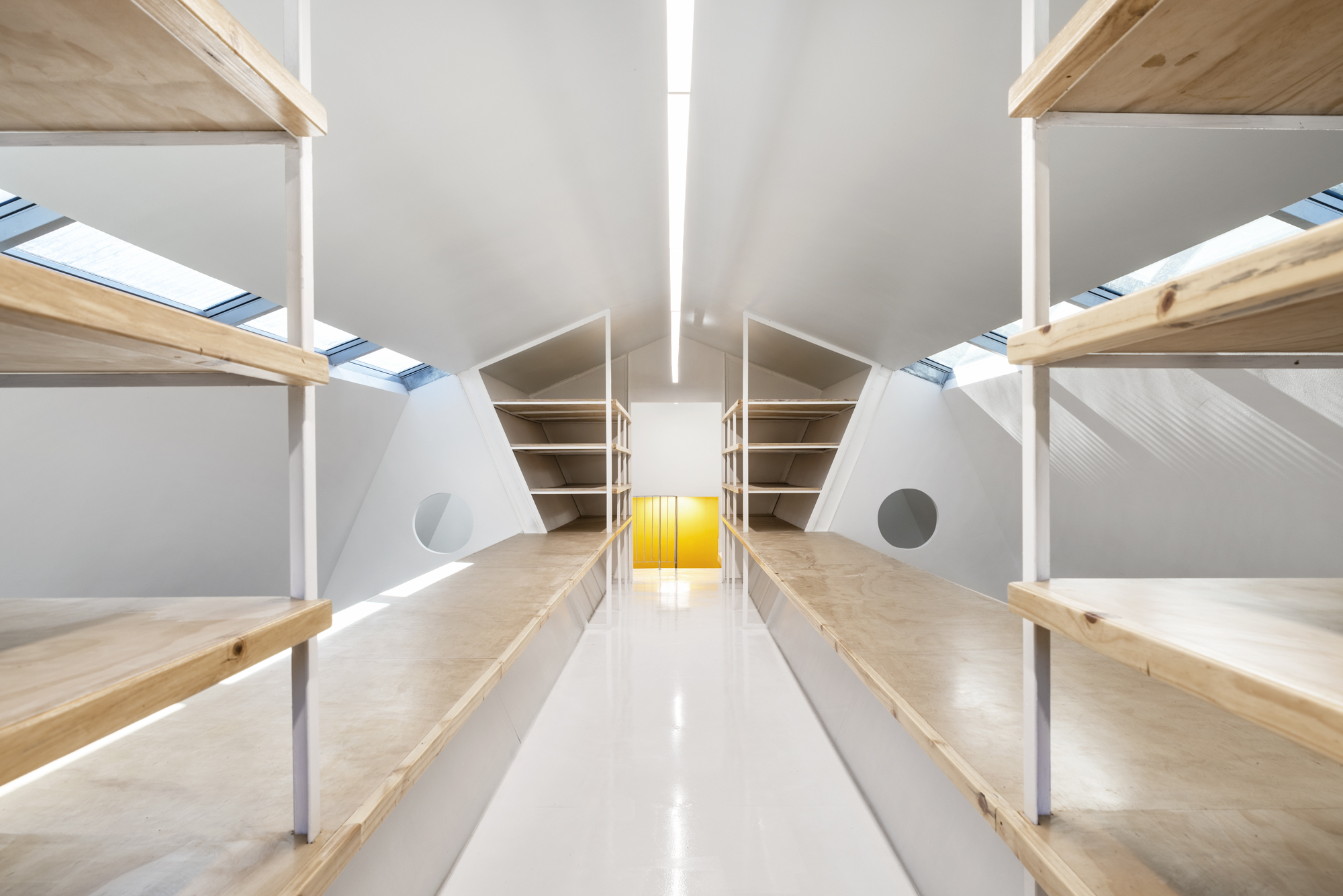
Denis Goldberg House of Hope. Image: Paris Brummer
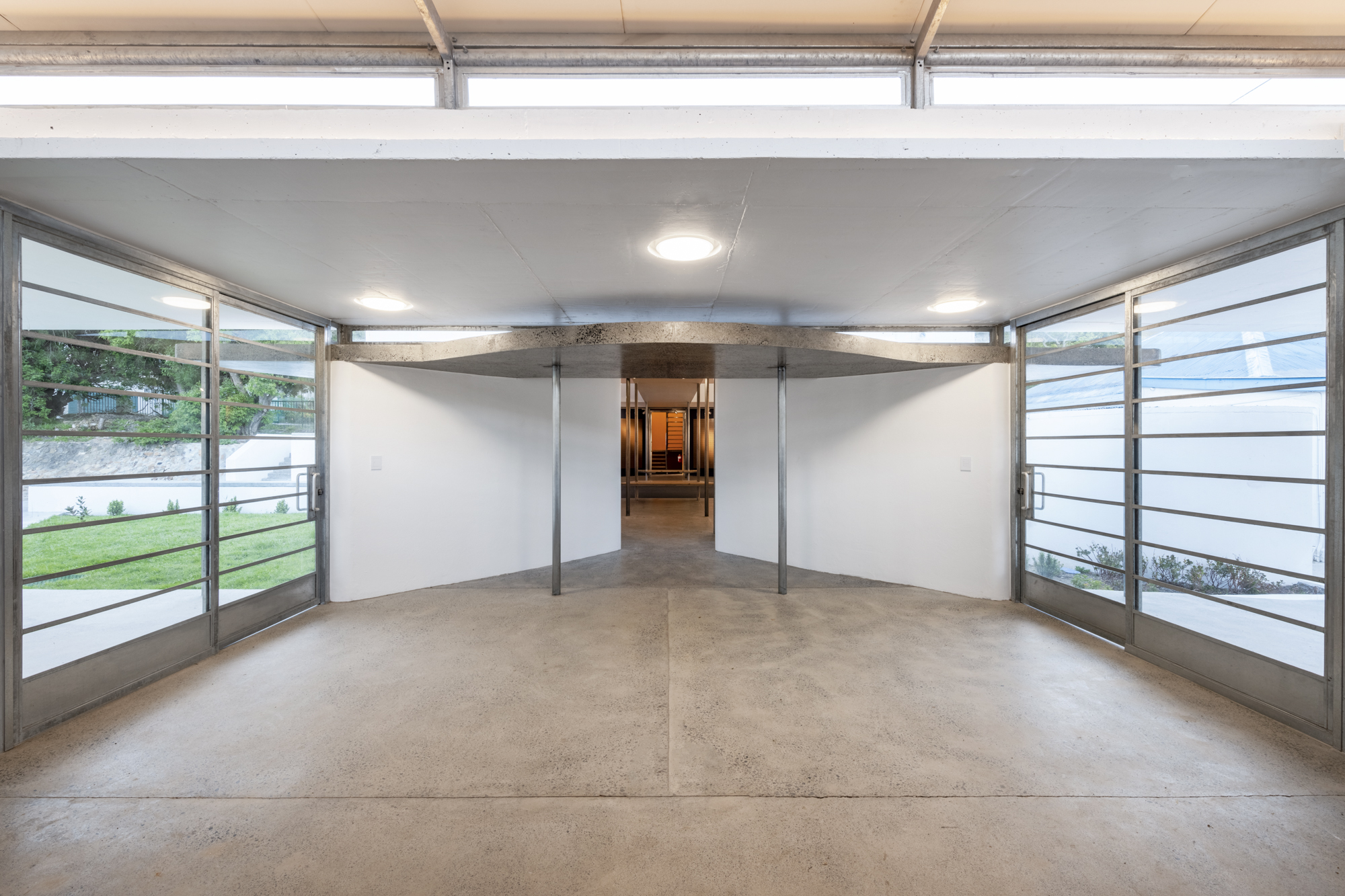
Denis Goldberg House of Hope. Image: Paris Brummer
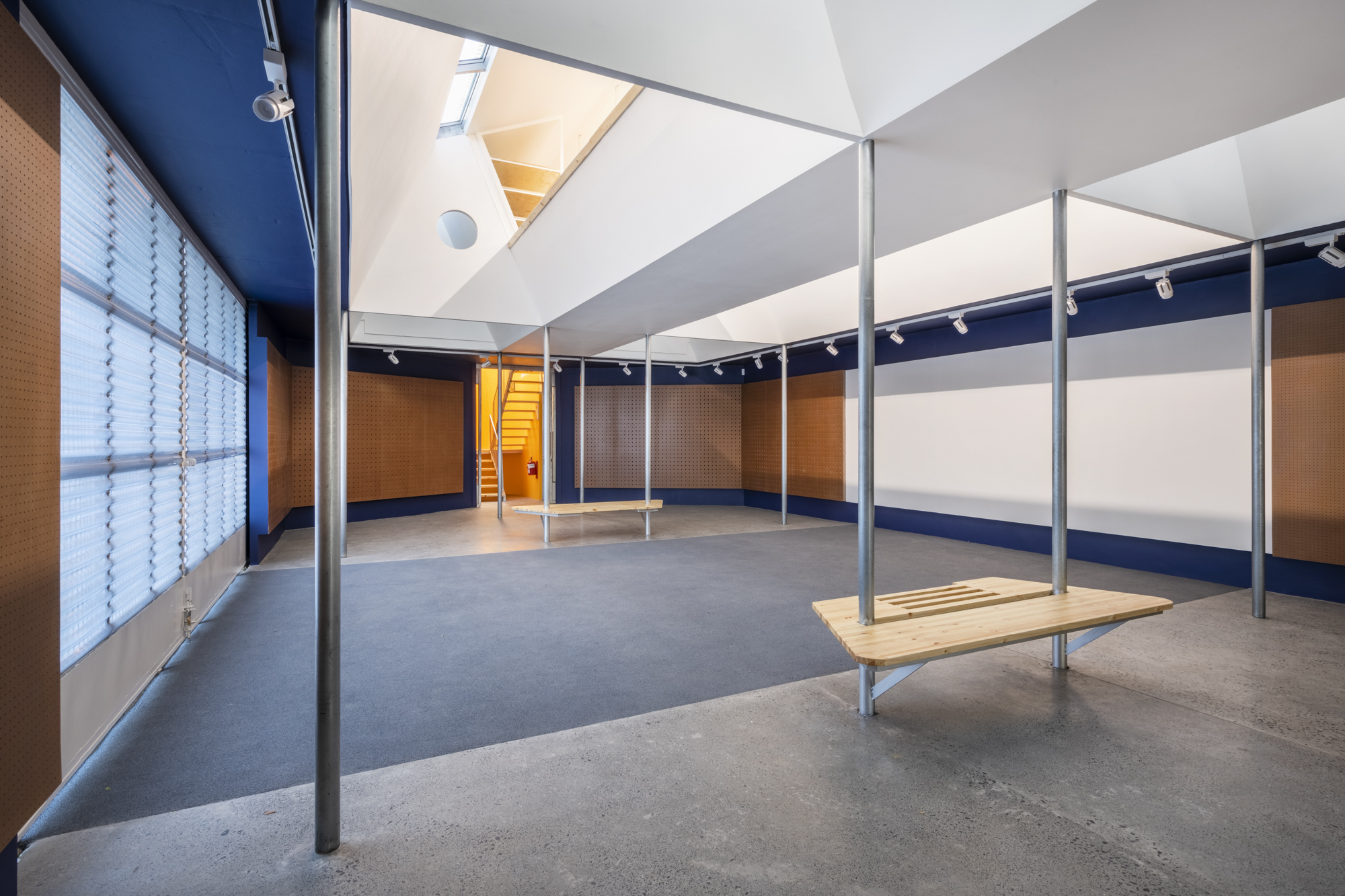
Denis Goldberg House of Hope. Image: Paris Brummer
These ideas become even more fascinating when intersecting with a second important concept for Noero and Goldberg, that of the essential versus luxurious. Golberg, who trained as a structural engineer, was practical in his outlook; he wanted to build a structure with no artifice.
“What is necessary is not always luxurious,” says Noero, “but what is luxurious is never essential.” He goes on: “You can use marble on a building in an essential way, and it can be beautiful. But gratuitous use of expensive materials and furnishing has no meaning at all.”
In the construction of the House of Hope, Goldberg and Noero wanted to “make something beautiful shaped by necessity, not luxury”. To Noero, “it is a building with no artifice. It just is what it is.” The centre, which costs about R3,5-million, a relatively small sum (“people pay that much to do a kitchen on the Atlantic Seaboard” Noero observes) is beautiful. It is bright and playful; the open spaces make one want to run or dance. It fits perfectly the function that it has been built to support.
In its simplicity and affordability, Noero hopes that the House of Hope could become a sort of prototype for similar projects. “It would be wonderful if people could come here and see it, and of course they don’t have to copy this, but to say, look, these are the kind of spaces that we really need. Imagine if we could build one of these in every township.”
The centre also shows us that perhaps the most beautiful moments of creativity happen within sets of boundaries.
More than anything, the House of Hope reminds us that imagination, creativity, freedom, and play are not artifices… they are essential. This is the case always, but perhaps particularly during childhood, the most important developmental stages of our lives. “Play is what you do,” says Noero. “It’s essential. Without it you don’t have a life.”
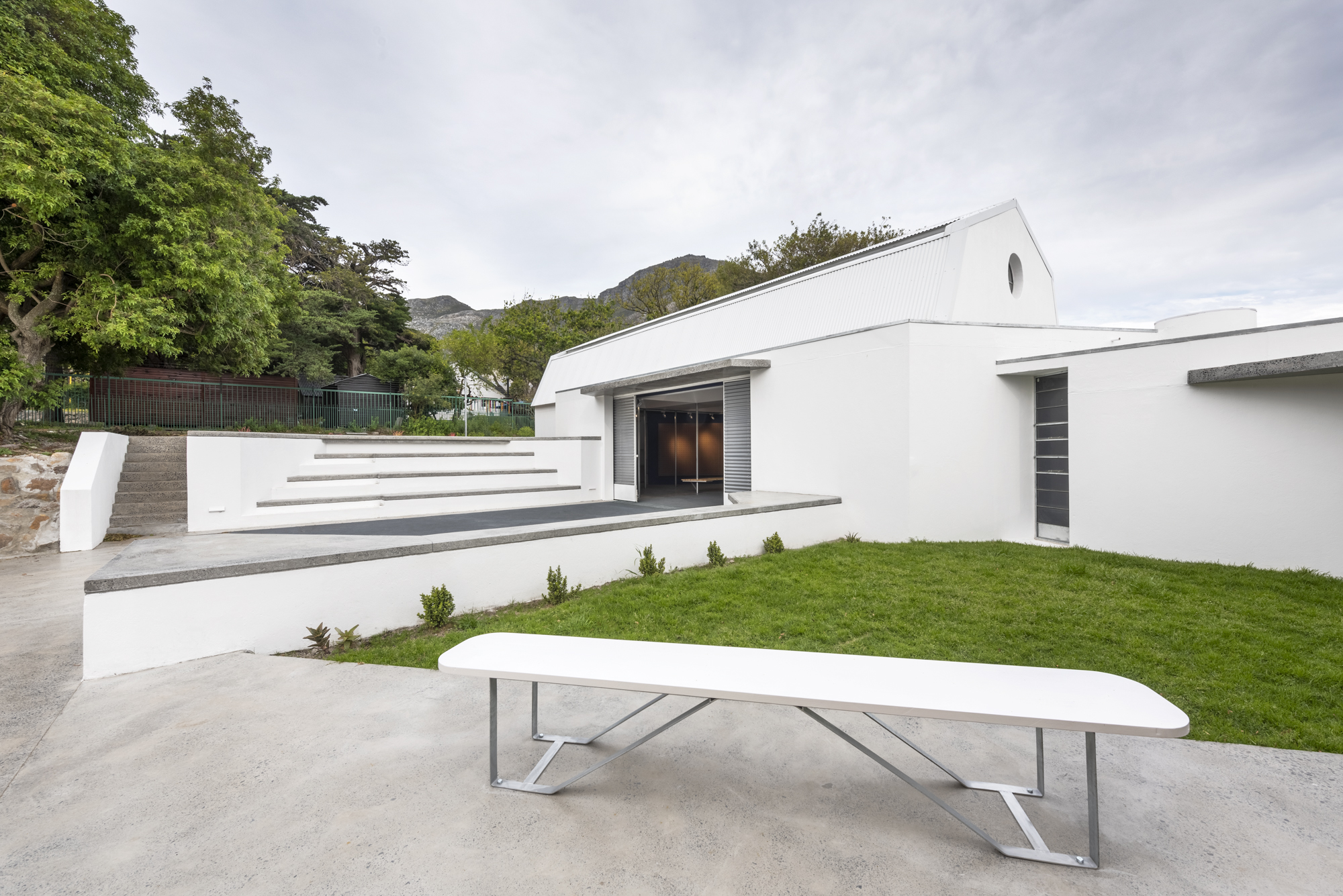
Denis Goldberg House of Hope. Image: Paris Brummer
The centre shows us that perhaps the most beautiful moments of creativity happen within boundaries. Noero gives the example of systems engineers that model ecological systems. Every system tends towards infinity, “it just keeps on expanding. So, if you really want to model a system you have to draw a boundary around it. That boundary is artificial, you can’t scientifically determine where it sits. A good systems engineer knows intuitively where that boundary sits. The same thing applies to architecture. There has got to be a point at which you draw a boundary. That’s why doing small buildings like this enables that kind of thinking. One can, to a certain degree, draw a proper boundary, and contain a world within it that you know, with confidence, is going to do some good.”
The House of Hope, built during Covid, is a feat of epic architectural imagination. The limitations of the project did not stop Goldberg, Noero, nor the rest of the team that stood behind the project. Instead, it fuelled the fire, stoking moments of innovation. What a profound message to send to the children who will be attending classes, workshops and events at the House of Hope, especially those whose opportunities have been unfairly limited by uncontrollable economical and social boundaries.
The building for phase one of the House of Hope is complete and waiting to be opened. When it does open (hopefully before the end of the year, according to Noero) the centre will be “for all the kids of Hout Bay. All of them”. Any NGO or structured arts-based project will be able to book a space in the House of Hope for whatever their initiative entails. “The one discipline that we are imposing is that the people who come here are dealing with kids and that their projects must deal with arts and culture,” says Noero.
The House of Hope, under the direction of Debbie Budlender, with the help of the arts coordinator Lavinia Staddon, will run some projects of its own, a few of which are already underway.
Phase two of the House of Hope will consist of further expansion, including several more classrooms. Noero hopes to run the centre just as is for a year or so: “We want to have a year, run it really well, build up critical mass and reputation. Then we can start thinking about phase two.
“Small is beautiful,” says Noero. “We will build from there.” DM/ML

















 Become an Insider
Become an Insider
Hi Emma, lovely article, just a small correction, although I have made several photos of the building, none of the photos credited to me on the article are mine, could you please give the deserved credit to the photographer who made them?
So Exciting!! Good news indeed, and what a priviledge to have Joe Noero on the project.